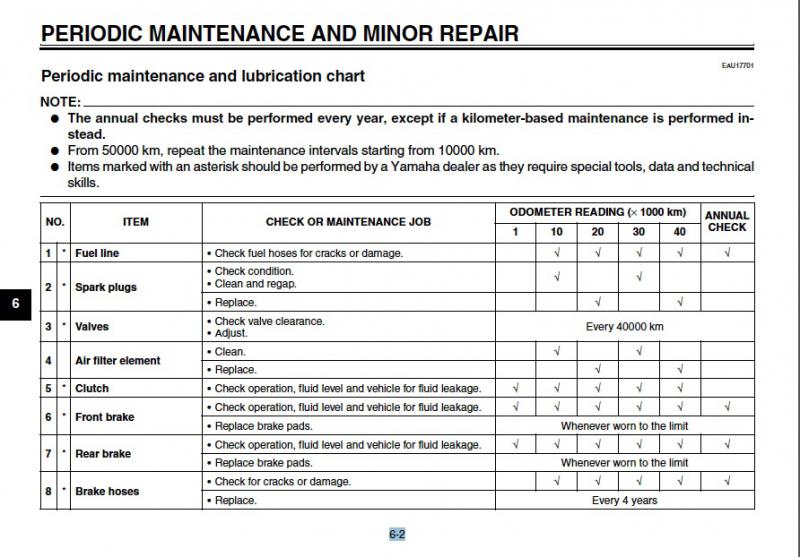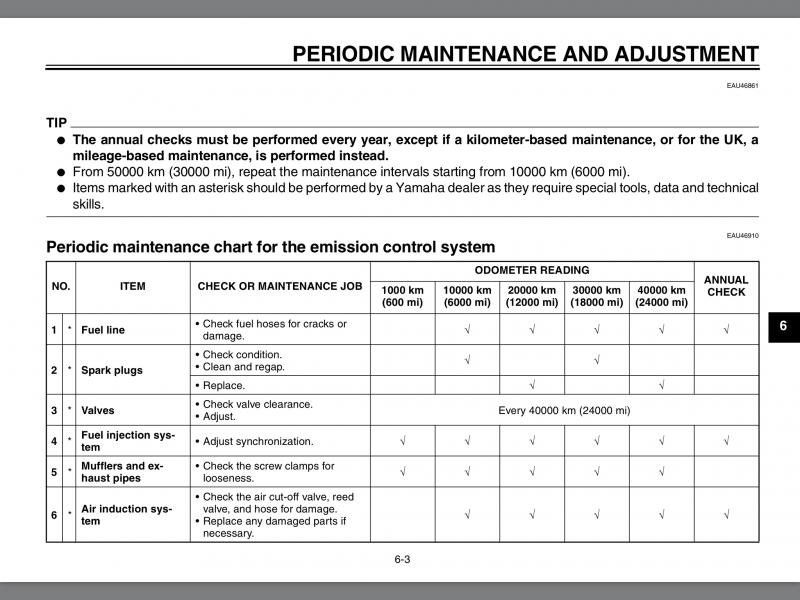Based on the above measurements I can see that you are actually measuring the clearances using inch based feeler gauges and then converting that to millimeters. The problems is that the gauges are too course to accurately know what your clearance really is at any one time. Example: .006" = .152mm, and .007" = .178mm. IOW, every increment of .001" in the inch based feelers is equivalent to .026 mm. Since the total spec range is .070 mm there are only 3 gauges to cover that range. You really do not know where within that .026mm the actual clearance is or was, therefore do noit really know how quickly the parts are wearing.Code:FIRST CHECK: 9/14/07 @28920 miles left to right Cylinder #1 Cylinder #2 Cylinder #3 Cylinder #4 left exhaust right exhaust left exhaust right exhaust left exhaust right exhaust left exhaust right exhaust 0.229 0.203 0.229 0.229 0.203 0.203 0.229 0.203 left intake right intake left intake right intake left intake right intake left intake right intake 0.178 0.178 0.178 0.178 0.178 0.178 0.178 0.152 SECOND CHECK: 6/9/11 @54154 miles left to right Cylinder #1 Cylinder #2 Cylinder #3 Cylinder #4 left exhaust right exhaust left exhaust right exhaust left exhaust right exhaust left exhaust right exhaust 0.203 0.203 0.203 0.203 0.203 0.203 0.229 0.178 left intake right intake left intake right intake left intake right intake left intake right intake 0.178 0.178 0.178 0.178 0.178 0.152T 0.178 0.152
I prefer to consider the inch based gauges as "Go / No Go" gauges. If you can fit an .006" (.152mm) into the intakes or a .007" (.178mm) into the exhausts then the clearances are within specs and should be left the hell alone.
The good news is that in no case did you change by more than .001", so worst case should be that a few valves would be out by .001" or less at the next valve check.
BTW, the idea that you should just set them loose and then don't bother to check them for a longer time doesn't make a whole lot of sense to me, especially if you are doing the job yourself. The reason that you set them on the loose side is so you don't have to adjust them too soon. I'd still check them at the same intervals, as that helps with determination of wear rate.
Last edited by a moderator:






















































